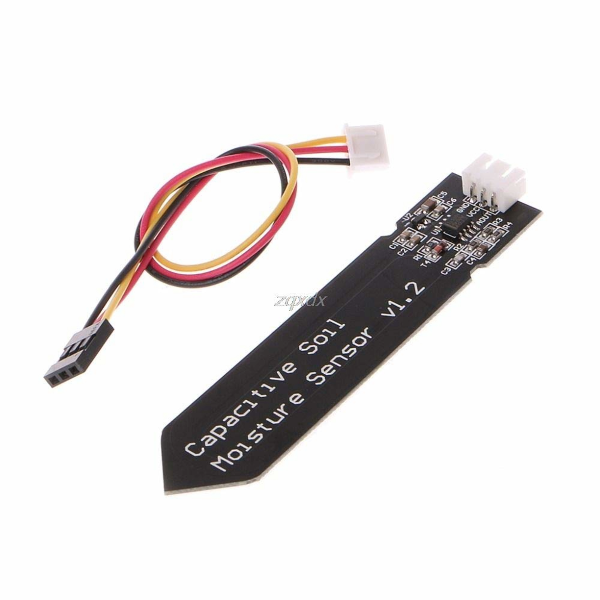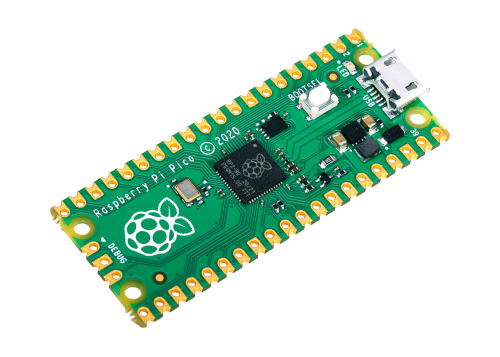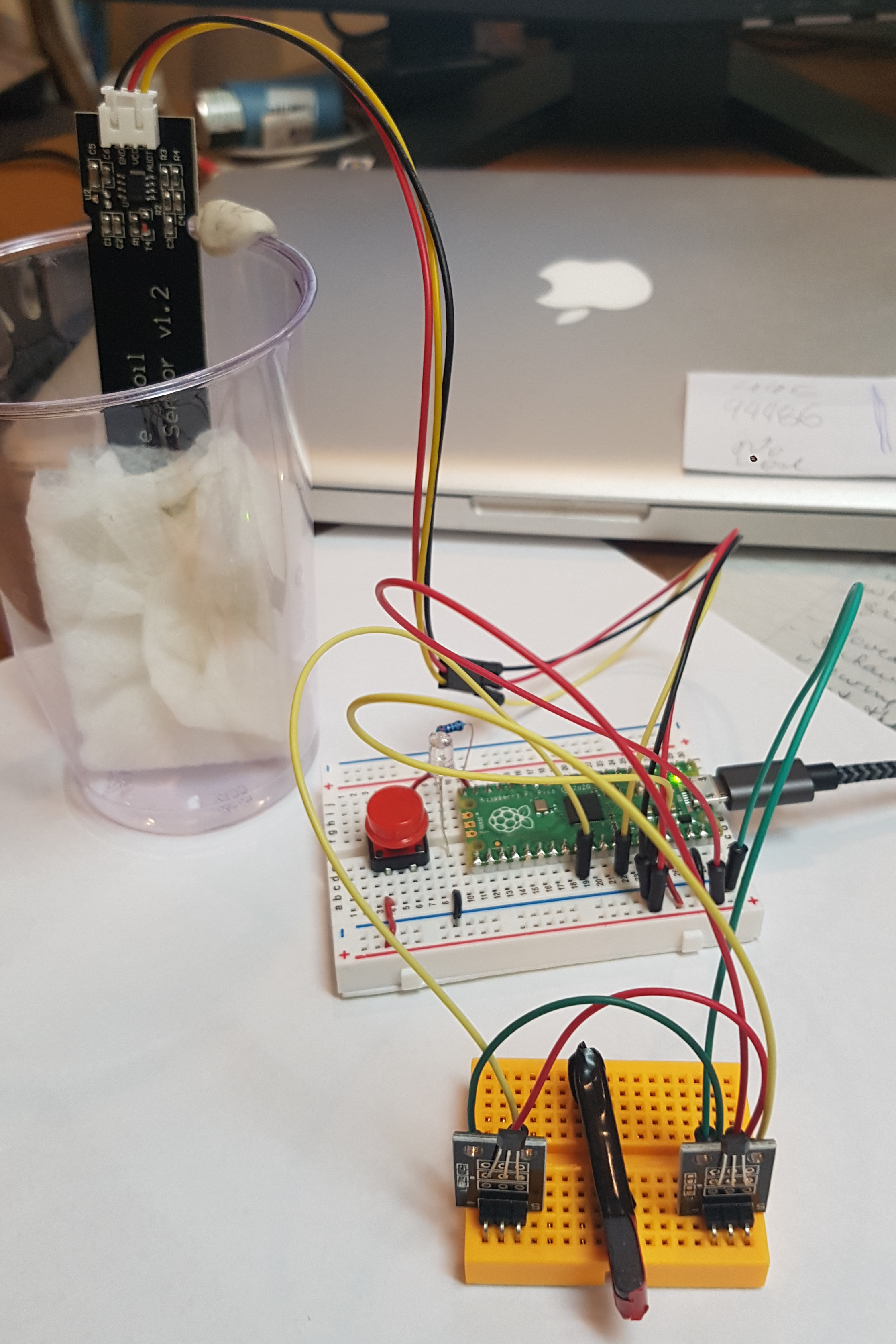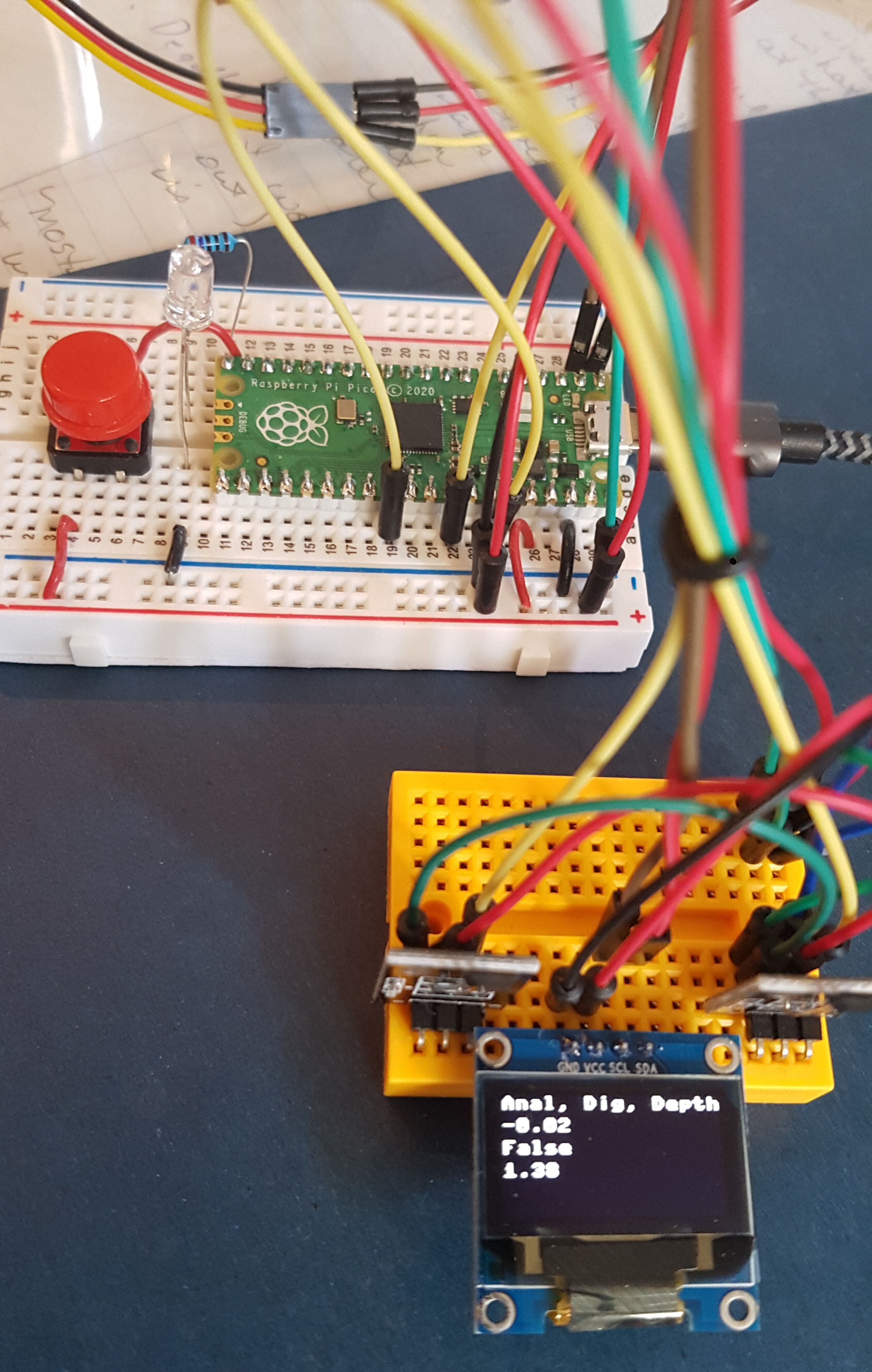



 The Picture shows 4
sensors
The Picture shows 4
sensorsand a magnet.
There is a 5th sensor, temperature, on the Pico board.


# Get the libraries we need
from machine import Pin, Timer, I2C
from ssd1306 import SSD1306_I2C
import utime
# hall d count global
dcount = 0
# Blink Speeds
blinkRate1 = .5 # seconds on/off
blinkRate2 = 2
# hall effect sensor
hall_val = machine.ADC(28)
# I2C
i2c=I2C(0,sda=Pin(0), scl=Pin(1), freq=400000)
# oled (width, height, i2c)
oled = SSD1306_I2C(128, 64, i2c)
# moisture sensor
moisture_val = machine.ADC(27)
# Temperature Sensor and Constants
sensor_temp = machine.ADC(4) # Temperature is on ADC 4
conversion_factor = 3.3 / (65535) # 3.3 V maximum / 16 bits.
# Set up the I/O pins
# Leds
led1 = Pin(25, Pin.OUT)
led2 = Pin(15, Pin.OUT)
# Push button
button = Pin(14, Pin.IN, Pin.PULL_DOWN)
#hall digital
hall_dval = Pin(22, Pin.IN)
# Instantiate a couple of timers for the leds
timer1 = Timer()
timer2 = Timer()
# Functions called when a timer expires
def blink1(timer1):
led1.toggle()
def blink2(timer2):
led2.toggle()
# Function called when halld is triggered
def countd(pin):
global dcount
dcount +=1
# link the interrupt for the halld
hall_dval.irq(trigger=machine.Pin.IRQ_FALLING, handler=countd)
# Start the timers
timer1.init(freq=1/blinkRate1, mode=Timer.PERIODIC, callback=blink1)
timer2.init(freq=1/blinkRate2, mode=Timer.PERIODIC, callback=blink2)
i = 0
# Loop forever clswhecking the button, counting and displaying
while 1:
# if button is pushed swap the blink rates and restart the timers
if button.value():
blinkRate1, blinkRate2 = blinkRate2, blinkRate1
timer1.init(freq=1/blinkRate1, mode=Timer.PERIODIC, callback=blink1)
timer2.init(freq=1/blinkRate2, mode=Timer.PERIODIC, callback=blink2)
print ("button")
# Get the temperature
reading = sensor_temp.read_u16() * conversion_factor
# Get the hall value and
# convert to -10 to +10 for max north south or south north - who knows?
hallReading = ((hall_val.read_u16() - 32767) / 3277) * -1
# Get the digital hall value 44E Chip
halldReading = not hall_dval.value()
# Get the moisture value
moistureReading = (moisture_val.read_u16())
# 60000 = 0 inches, 27000 = 2.5 inches inserted in water
inches = 2.5 - ((moistureReading - 27000) * 2.5/33000)
# The temperature sensor measures the Vbe voltage of a biased
# bipolar diode, connected to the fifth ADC channel
# Typically, Vbe = 0.706V at 27 degrees C, with a slope
# of -1.721mV (0.001721) per degree.
temperature = 27 - (reading - 0.706)/0.001721
# Display count, temperatures and moisture.
# Display count, temperatures and moisture.
print ("\nCount: %5d" %(i))
print ("Temperature: %3.3f" %(temperature))
print ("Hall: %5.2f" %(hallReading))
print ("HallD: ", end='')
print (dcount)
print ("Depth: %5.2f" %(inches))
# Display on the oled
oled.fill(0)
oled.show()
oled.text("Anal, Dig, Depth",0,0)
oled.text(str(round(hallReading,2)),0,12)
oled.text(str(halldReading),0,24)
oled.text(str(round(inches,2)), 0,36)
oled.text(str(dcount),0,50)
oled.show()
i += 1
utime.sleep(2);